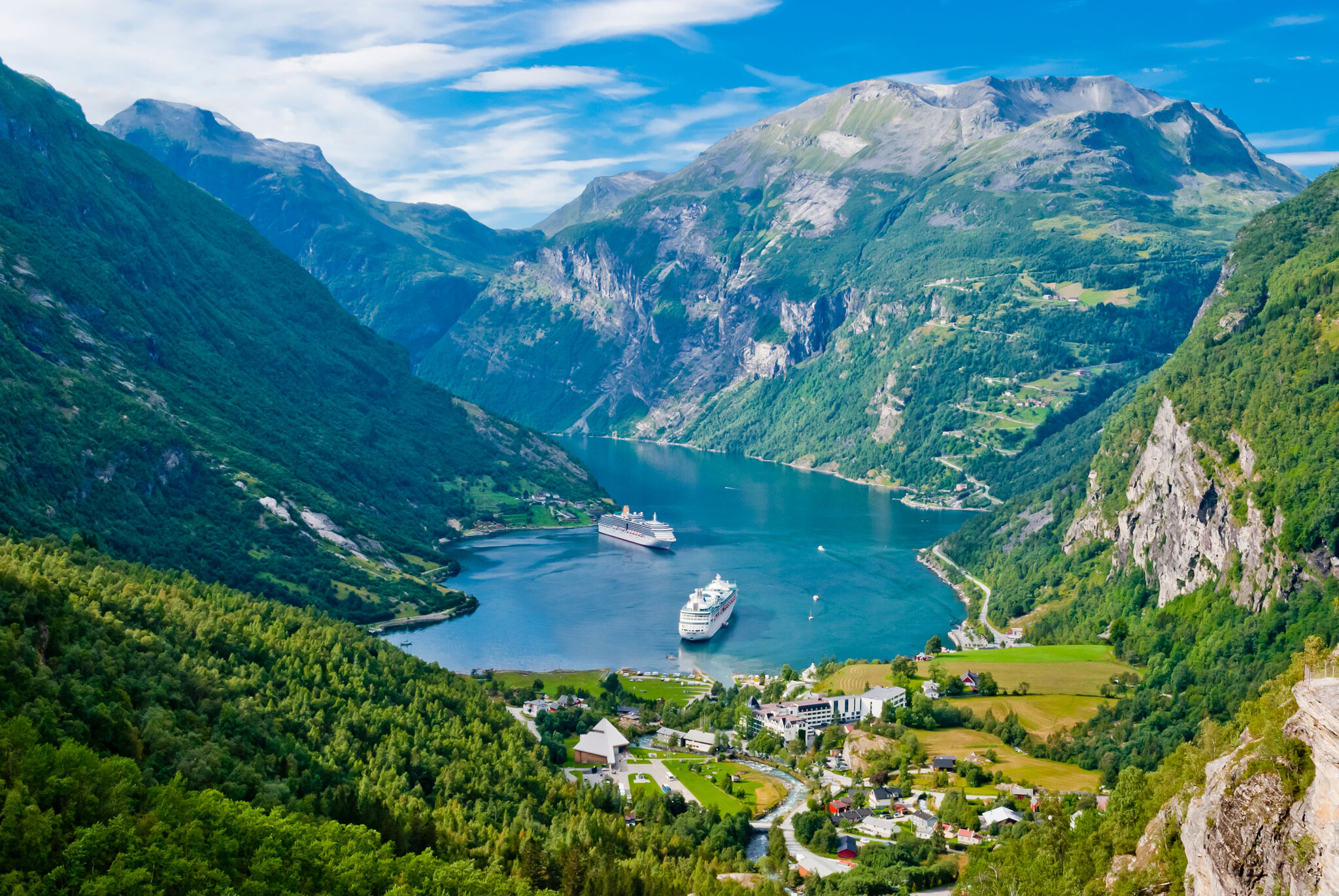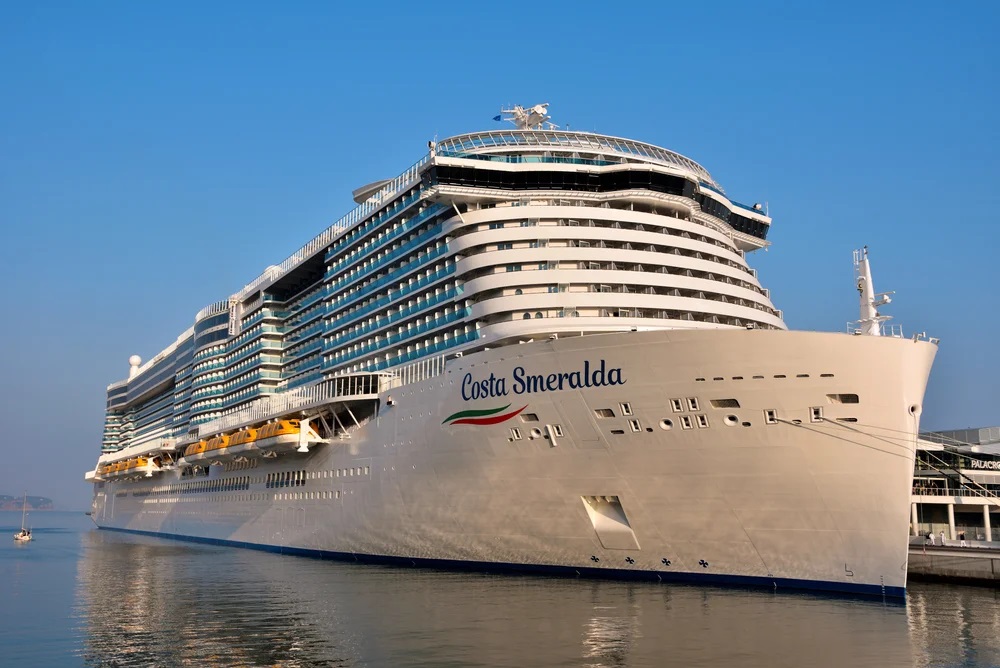Feature
How cruise operators are navigating new emission rules
As new Emission Control Areas emerge in European waters, Keri Allen explores how cruise operators are compelled to invest in fuel compliance and emission reduction technology.

In 2025 and 2026 respectively, the Mediterranean and Norwegian seas will be the latest bodies of water to become Emission Control Areas (ECAs).
These regulations will require all ships to use fuel with less than 0.10% sulphur content within these areas or use sulphur abatement technology if approved by the flag state. In the case of the Norwegian Sea ECA, which will also cover some inland waterways – fjords – there’s an additional requirement relating to nitrogen oxide (NOx) emissions.
Different tiers of control will be applied based on a ship’s construction date, and various means are available for ships to comply. These include engine design, the use of alternative fuels and installation of devices such as selective catalytic reduction (SCR) and exhaust gas recirculation (EGR).
The impact on cruise operators
While the new ECAs will have regulatory, operational, and financial impacts for all vessels, these will likely be more pronounced for cruise operators, notes Mark Towl, Lloyd’s Register’s principal regulatory risk specialist.
Cruise ships will likely have multiple port calls and extended stays within ECAs, requiring constant compliance with emission standards, whereas cargo vessels spend less time in these areas and can have their compliance managed more strategically, explains Towl.
“Because of their frequent and extended stays in port, cruise operators will likely face increased costs associated with very low sulphur fuel for emission compliance,” he says.
“Due to the nature of their operations, cargo ships often spend less time in ports or in coastal waters compared to cruise ships. They may switch to compliant fuel before transiting the Mediterranean Sea ECA and switch back to a more cost-effective fuel option once they are through the area.”
Another challenge cruise ships face is high public visibility and passenger expectations for sustainable practices, making compliance crucial for maintaining a positive reputation.
“Cargo operators face less public scrutiny and can focus more on regulatory and financial implications,” Towl adds.
Monitoring and enforcement
When it comes to the monitoring and enforcement of regulations, cruise ships entering ECAs could undergo regular inspections by port authorities, including fuel log checks, fuel sulphur content verification and equipment certification checks, according to Towl.
“And ships equipped with exhaust gas cleaning systems (EGCS) or ‘scrubbers’ will be closely monitored, as they must meet specific ECA standards for sulphur removal,” he says.
The consequences of non-compliance can’t be ignored, especially by public facing organisations like cruise operators. According to the International Maritime Organisation’s (IMO) guidelines for port state control under MARPOL Annex VI, the use of non-compliant fuel is considered to be of such a serious nature that it may warrant detention of the ship involved.
“Several coastal states have already enforced sanctions such as fines of several thousand Euros for ships not complying with IMO regulations,” says Natasha Brown, head of outreach and communications at the IMO.
Several coastal states have already enforced sanctions for ships not complying with IMO regulations.
Depending on a ship’s operational profile, sulphur oxide (SOx) emissions compliance could require significant investment in emissions abatement technology, if ships that have previously operated solely outside of an SOx ECA will now be operating in the ECA.
“Operators will face a choice of using compliant fuel or fitting a scrubber,” says Towl.
“This is likely to be a more pronounced cost impact for cruise ships operating solely in or around the Mediterranean Sea, where there are no other SOx ECAs they may be entering, than for those entering the Norwegian Sea ECA, as there are already neighbouring North Sea and Baltic Sea SOx ECAs with which they already have to comply.”
Due to the requirement of keeping fuel usage records, many cruise operators will choose to install or upgrade continuous emission monitoring systems (CEMS) that provide real-time data on sulphur and nitrogen oxide emissions.
Keeping an eye on the horizon
But this isn’t to say cruise operators are on the back foot. All of Carnival Corporation’s cruise ships are already capable of operating in SOx ECAs with either LNG, EGCS, or compliant fuels, for example.
“We saw SOx regulations coming 10 years in advance, so we’ve been working on it for most of that time,” says Mike Kaczmarek, Carnival Corporation’s SVP of marine technology and refit. “But for locations that require NOx Tier III (currently only the Norwegian World Heritage Fjords), we will have to install SCRs. This will also have an impact on itinerary planning, due to the ship modifications required.
“We have had some advanced notice regarding NOx requirements and our engineers developed an SCR internally, which can be retrofitted. We’ve had one ship operating in the Norwegian fjords with our SCR, so it’s a proven solution.
“We were the first to build large LNG-powered cruise ships, and we currently have ten of these, with several more on order. These meet all NOx requirements so we won’t need an SCR,” Kaczmarek continues. “We’ve also tested biofuels in some of our ships, and the use of biofuels will be one of the principal ways we will comply with greenhouse gas (GHG) emissions regulations in the near/medium term.”
The company has also won funding from the EU Innovation Fund for a methanol conversion project for one ship in its Princess fleet.

The Costa Smeralda was Carnival's first LNG-powered vessel. Credit: maudanros / Shutterstock
“This is planned for 2026. Currently, we’re doing technical studies and risk assessments to give the ship methanol capability – it will still be capable of burning NGO and HFO,” adds Chris Millman, Carnival Corporation’s VP of marine technology.
“We’re at a stage where everyone’s still unsure what the final answer will be [in terms of regulation] so we’re compelled to look at everything and have got our fingers in many areas including development into carbon capture. We’re staying pretty close to state-of-the-art technology across the board.”
Operators like Carnival are also working closely with the wider industry to ensure a smooth transition to more sustainable fuels like LNG.
“We can’t just expect [the infrastructure] to be there, so we have to take the initiative to work with ports, distributors suppliers; the whole logistics chain, to make it work,” says Kaczmarek.
“We’ll continue to watch regulatory developments closely. We plan our itineraries at least two years in advance, so we simply can’t be surprised because we can’t turn on a dime! This is why it’s so important that we keep looking way ahead.”